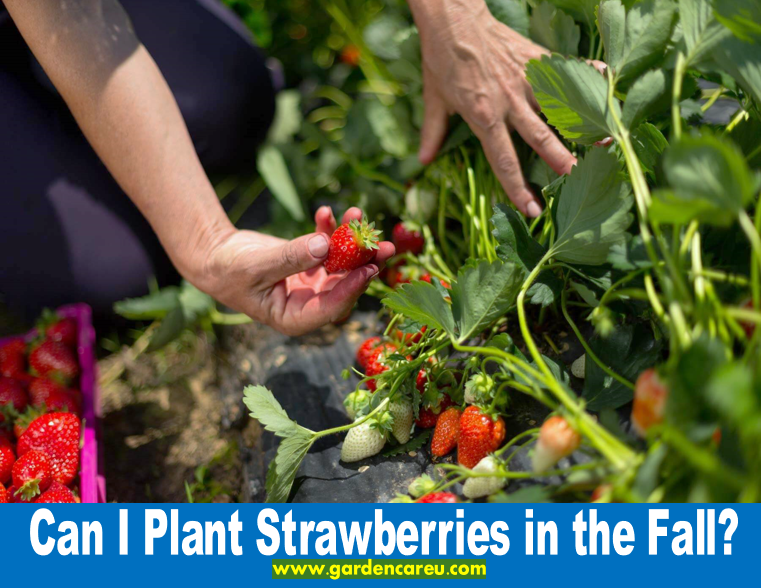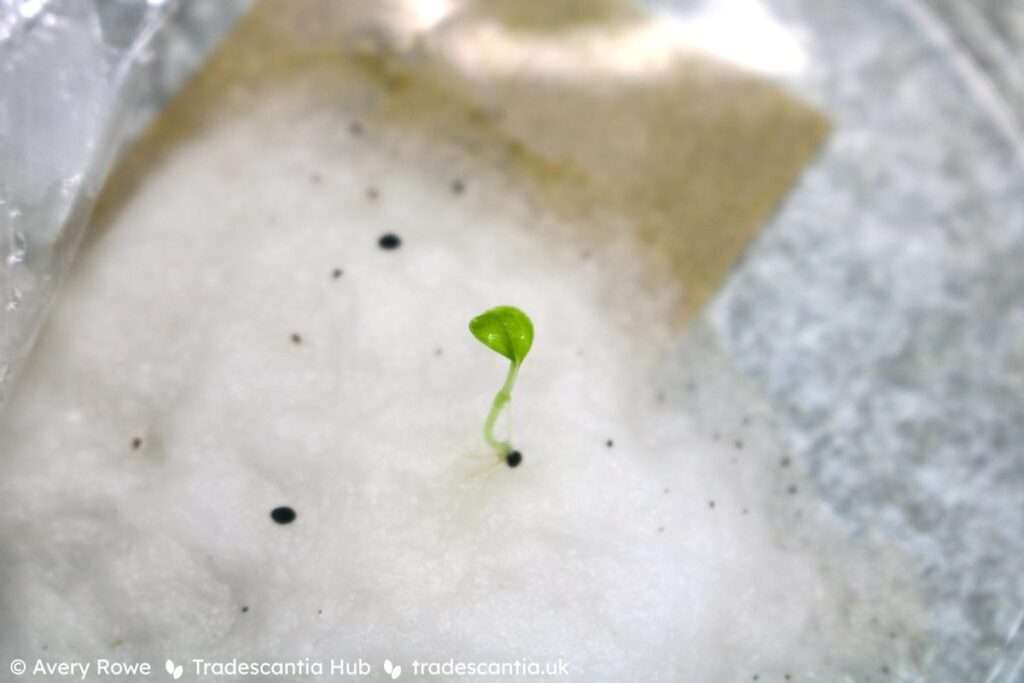Can I Plant Strawberries in the Fall? Yes, you can plant strawberries in the fall for a good spring harvest. Planting in the fall allows the root system to establish before winter, resulting in more mature plants in the spring, ensuring a bountiful harvest.
When grown in cooler temperatures, strawberries thrive and are more productive than those planted in spring. Research conducted at the Texas A&M Research Center in Lubbock supports the benefits of fall planting, showing higher yields in plants protected from freezing temperatures.
By opting for fall planting, you give your strawberries the best possible start and set the stage for a successful growing season. Embracing this approach can lead to healthier plants and delicious berries.
[ez-toc]
Benefits Of Planting Fall Strawberries
Planting strawberries in the fall allows the root system to establish itself before going dormant in winter. This results in a more mature and fully-rooted plant come spring, which leads to a head start and a good spring harvest.
Below is an engaging section of a blog post about planting fall strawberries. It focuses on the subheading: Benefits of Planting Fall Strawberries:
Benefits of Planting Fall Strawberries
When planting strawberries, many people think of springtime as the ideal season. However, planting strawberries in the fall comes with several benefits. From a well-established root system to an early maturity in spring, fall-planted strawberries have an edge. Let’s take a closer look at these advantages.
Early Maturity in Spring
Fall-planted strawberries mature earlier in the spring, resulting in an earlier and prolonged harvest season. This early maturation allows you to enjoy delicious, homegrown strawberries sooner, giving you a head start on the growing season. In conclusion, fall planting gives strawberries a head start on the growing season. With a well-established root system and early maturity in spring, fall-planted strawberries have distinct advantages over their spring-planted counterparts. So, if you’re considering planting strawberries, don’t overlook the benefits of fall planting for a bountiful spring harvest.

Best Time To Plant Fall Strawberries
Planting Fall Strawberries: Plant strawberries in the fall for a bountiful spring harvest.
Avoiding Summer Heat Stress
Optimal Timing: Fall planting shields strawberries from intense summer heat stress.
Strategies For Successful Fall Planting
Planting strawberries in the fall allows for a good spring harvest. It’s best to plant them in October, as research shows they are more productive when protected from freezing temperatures. By establishing their root system during the fall months, the plants will be fully rooted and mature come spring.
Soil Preparation
One key strategy for successful fall strawberry planting is proper soil preparation. Strawberries thrive in well-draining soil that is rich in organic matter. Before planting, it is important to amend the soil with compost or aged manure to improve its fertility and texture. This will create a favorable environment for the strawberry plants to establish strong roots and grow healthy.
Additionally, it is crucial to ensure that the soil has a pH level between 5.5 and 6.5, as strawberries prefer slightly acidic conditions. Conduct a soil test to determine the pH level of your soil and make necessary adjustments using lime or sulfur if needed. Maintaining the right soil pH will enable the plants to absorb nutrients from the soil efficiently.
Planting Techniques
When it comes to planting strawberries in the fall, a few techniques can increase the chances of success. First, select healthy strawberry plants from a reputable source. Look for strong crowns, green leaves, and no signs of disease or pests. This will ensure that you start with robust plants with the best chance of surviving and producing a bountiful harvest.
Next, ensure proper spacing when planting the strawberries. Plant them in rows, with each plant spaced about 12 to 18 inches apart. This will allow the plants to spread and receive adequate sunlight and airflow.
Fertilization And Mulching
Fertilization is essential for the healthy growth of strawberry plants. Before planting, apply a balanced, slow-release fertilizer to the soil following the manufacturer’s instructions. This will provide the necessary nutrients for the plants to establish strong root systems and promote vigorous growth.
After planting, apply a layer of organic mulch around the plants to conserve moisture, suppress weed growth, and regulate soil temperature. Straw, pine needles, or wood chips make excellent strawberry mulch choices. Apply a layer of mulch about 2 to 3 inches thick, taking care not to bury the crown of the plants. Mulching will also help to prevent the development of fungal diseases by keeping the fruit off the soil.
Implementing these strategies for successful fall strawberry planting can increase your chances of a bountiful spring harvest. Proper soil preparation, planting techniques, fertilization, and mulching practices will set the foundation for healthy and productive strawberry plants.
Selecting The Right Strawberry Varieties
Selecting the right varieties for strawberry cultivation in the fall is crucial for a bountiful harvest. Cool-weather adaptability and productivity in fall planting are key factors in choosing the right strawberry varieties for your garden.
Cool-weather Adaptability
Opting for strawberry varieties well-suited for cooler temperatures is essential for fall planting. Varieties such as ‘Seascape,’ ‘Albion,’ and ‘Chandler’ are renowned for their ability to thrive in cool weather, making them perfect choices for fall cultivation. These varieties can withstand the chilly temperatures of the fall season, ensuring robust and healthy plants that will yield an abundant crop when spring arrives.
Productivity In Fall Planting
When seeking strawberry varieties for fall planting, it is important to select types that exhibit high productivity during this season. ‘Ozark Beauty’ and ‘Quinalt’ are excellent choices renowned for their exceptional productivity in the fall. These varieties are known for their vigorous growth and high fruit yield, making them ideal candidates for fall planting. By choosing such varieties, you can maximize your strawberry harvest even when planting in the autumn.
Tips For Maintaining Fall-planted Strawberries
Winter Care
Protecting fall-planted strawberries during winter is crucial for a successful spring harvest.
Protection From Freezing Temperatures
Shielding strawberries from freezing temperatures is essential to prevent damage to the plants.
In winter, ensure the following for optimal care:
- Apply a thick layer of mulch around the plants to insulate the roots.
- Provide frost protection with row covers or cloches.
- Water the plants sparingly during dormant periods to prevent dehydration.
By taking these precautions, you can safeguard your fall-planted strawberries and ensure a bountiful harvest come spring.
Case Studies: Fall-planted Strawberries Success Stories
Planting fall strawberries can lead to success with careful planning and preparation. Fall-planted strawberries allow the root system to establish before winter, resulting in a more mature and productive plant come spring. Discover the secrets to growing vibrant strawberries with these fall success stories.
Testimonials And Results From Research Centers
Fall-planted strawberries have shown remarkable success in various research centers. The Texas A&M Research Center in Lubbock conducted extensive research showing that strawberries planted in October and protected from freezing temperatures were significantly more productive than those planted in the spring. This evidence indicates the potential for a bountiful spring harvest when strawberries are planted in the fall.
Experiences Of Home Gardeners
Home gardeners have also shared their success stories with fall-planted strawberries. Many have reported thriving, healthy plants and plentiful yields in the following spring. Planting strawberries in the fall has allowed these gardeners to enjoy an abundant harvest, demonstrating the practicality and benefits of fall planting for strawberry cultivation.

Frequently Asked Questions On Can I Plant Strawberries In The Fall
Can You Plant Strawberries In The Ground In The Fall?
Yes, you can plant strawberries in the ground in the fall. Fall planting establishes the root system before the winter, leading to a better spring harvest.
Can You Plant Strawberries In October?
Yes, you can plant strawberries in October for a good spring harvest. Strawberry plants thrive in cooler weather.
How Late Can You Plant Strawberries?
You can plant strawberries in the fall, ideally in September or early October. Planting in the fall allows the root system to establish itself before going dormant in the winter, resulting in a more mature and fruitful plant in the spring.
Avoid planting in the summer due to the intense heat, causing stress for the plants.
Can You Grow Strawberries In September?
You can grow strawberries in September for a good spring harvest by planting them in the fall.
Can I Plant Strawberries In The Fall?
Planting strawberries in the fall allows the root system to establish itself before going dormant, resulting in a better spring harvest.
Can You Plant Strawberries In October?
Research shows that planting strawberry plants in October, protected from freezing temperatures, yields more productive results than spring planting.
Conclusion
Ready to enjoy a bountiful strawberry harvest in the spring? Planting strawberries in the fall is key. Establishing roots during the cooler months will make your plants stronger and more productive. Don’t wait until it’s too late – start your fall strawberry garden today for sweet rewards ahead.


